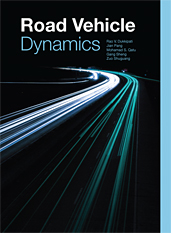Technical Paper
Correlation of Objective and Subjective Evaluation in Automotive Brake Pedal Feel
2018-10-05
2018-01-1889
In order to establish the correlation between objective and subjective evaluation of brake pedal feel for passenger cars, road tests of brake pedal feel were carried out and an evaluation method was proposed. In the road tests, subjective scores and objective measurements were obtained under the conditions of uniform and emergency braking. The objective measurements include pedal preload, low deceleration pedal force and travel, moderate deceleration pedal force and travel, brake response time and brake linearity. Using the theory of analytic hierarchy process (AHP), the design process of the evaluation method was established. Key setups including the hierarchical structure model, the judgement matrix and the score calculation method of objective measurements were described in detail. Then, the correlation between subjective and objective scores was analyzed. It can be concluded that the evaluation method is effective and it can be applied to brake pedal feel assessment and adjustment.

